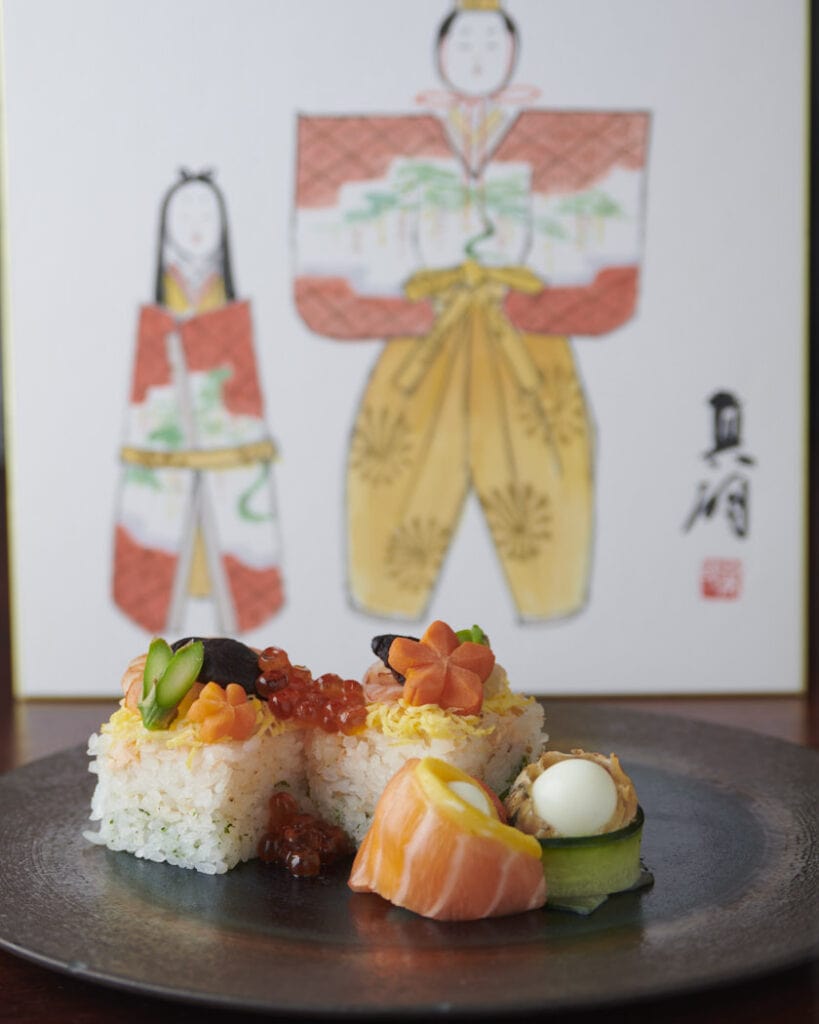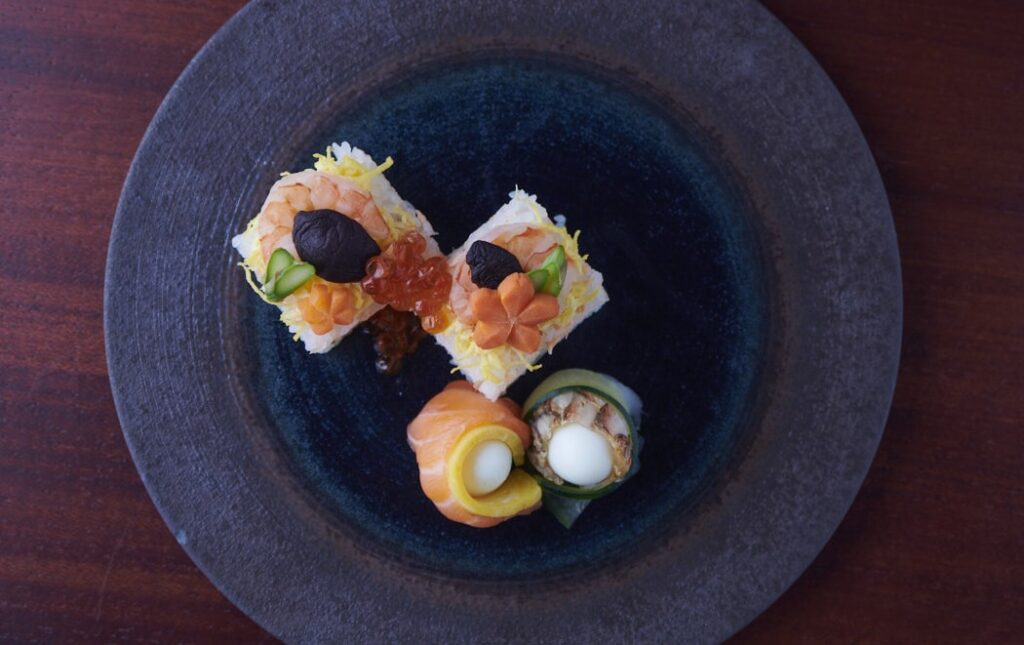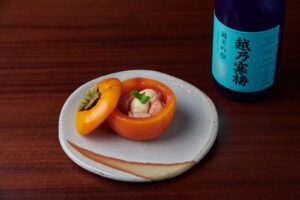Japanese cuisine and culture fascinates us and so we always like to tell culinary stories from Japan - this is about special food for a special day...
March 3 - Hina Matsuri, the girls' day
On March 3, Hina dolls are set up and decorated in Japan. On this "Girls' Day" (also known as the "Dolls' or Girls' Festival"), prayers are said for girls to grow up healthy and happy.
This day is also called "Momo-Sekku" (桃の節句), "peach blossom festival", because at this time the peach blossom begins.
Hina dolls are lovingly decorated with peach and cherry blossoms and special dishes are eaten to celebrate the day, such as colorful diamond-shaped rice cakes (said to symbolize fertility), arare (pastel-colored sweet cube-shaped rice crackers), chirashi sushi (also lightly sweetened with fish and vegetables) and clear clam chowder. This festival is one of the most celebrated festivals and many colorful events are held throughout Japan on this day.
How was Hina-matsuri created?
Hina-Matsuri was originally "Jōshi" (上巳) , one of the five "Sekku-"events (節句、seasonal festivals) originating from China. In ancient times, it was believed that evil spirits could enter people's bodies particularly easily around the time of "Setsubuku" - meaning turn of the seasons.
In order to protect oneself against this, the custom developed in Japan of stroking one's stomach with paper dolls (which were supposed to symbolize humans and thus deceive the spirits) and then letting these dolls float away in a river (in "Jōshi") that flowed into the sea. In this way, the body was supposed to be cleansed of the impurities caused by the spirits, and the paper dolls were supposed to carry them away in the river. This custom is probably the origin of Nagashi-Bina, a special Hina-Matsuri event that still exists today.
In the Heian period (794 - 1185), when the celebration of the Sekku festivals began to take root, "Hina-Asobi" (雛遊び playing with dolls) also became very popular among the children of the nobility. The word "Hina" means a small, adorable thing, and it is believed that puppetry and "Jōshi" combined to form the original form of today's Hina-Matsuri festival.
Over time, the technique of doll making evolved, and especially in the Edo period (1603 - 1868), finer and more precious dolls were made. Since playing with dolls and girls' enjoyment of beautiful dolls were related, "Jōshi" gradually developed into a festival for girls, "Hina-Matsuri".
Hina dolls accompany a woman all her life
When a girl is born, it is customary for her maternal grandparents to give the child Hina dolls. These dolls are very preciously crafted and expensive and remain as a woman's property throughout her life, even if she is married. Often they are also inherited by many generations in the families.
Hina puppets are a group of puppets according to fixed rules. They consist of a ruling couple (O-Dairi-sama and O-Hina-sama), three females, sometimes referred to as servants but also as courtesans (Kanjo), five musicians, two guards (or ministers), and three other people who serve the high couple. The rulers, as well as their subordinates, are splendidly dressed, often in the traditional court dress of the Heian period. Bright red and gold tones add to the ostentatious impression. The entire court is arranged on a 5- to 7-tiered altar, often supplemented with furnishings and especially kitchen items.
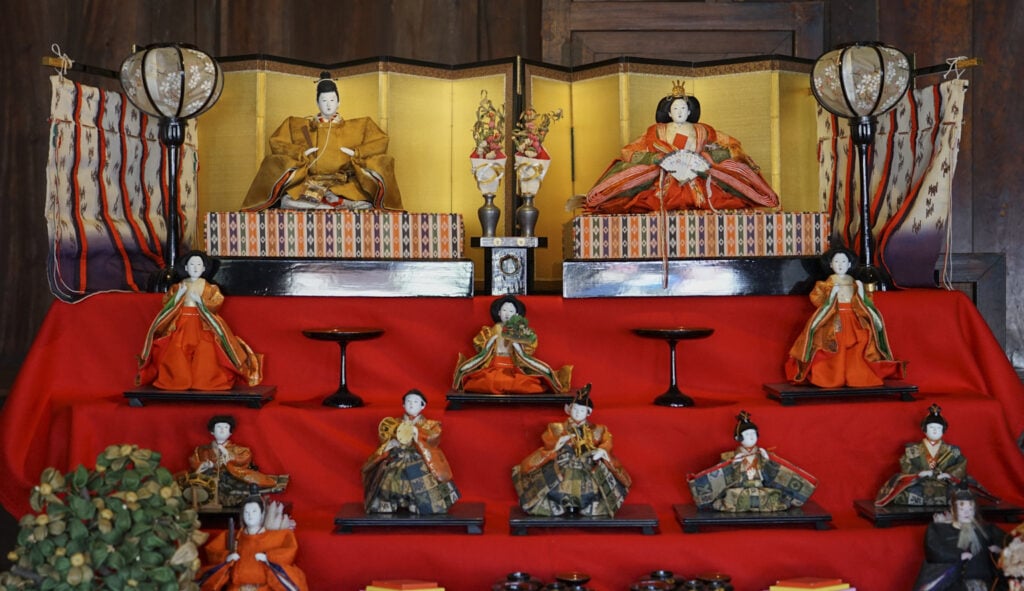
One of the servants on the second step, in some arrangements, hands sake to the ruling couple ("Amazake", white sake enjoyed at the Hina festival in a slightly sweetened and alcohol-reduced form) - a sign of the drink's special significance.
However, since most families nowadays do not have large homes, it has become customary for the Hina dolls to consist only of the ruling couple.
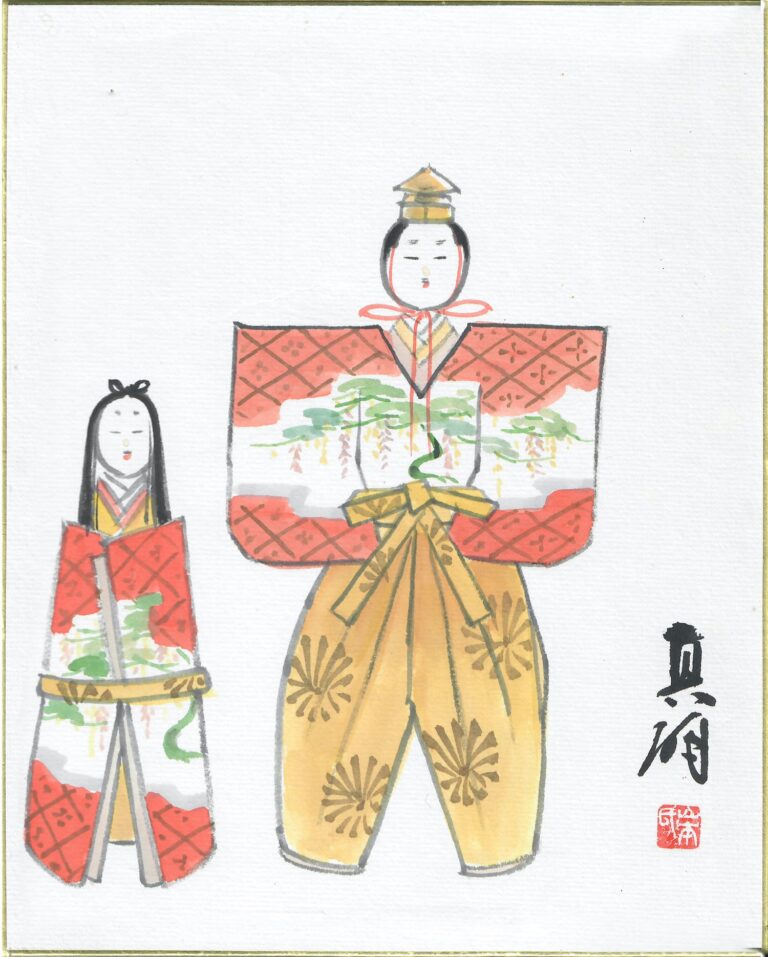
Already in mid-February, the girls begin to decorate their Hina dolls.
March 3 is then the climax with the day of the festival, after which traditionally the dolls should be put away immediately. This originally had its reason in that the dolls should be protected from the moisture of the beginning rainy season. But of course, there was a special meaning attached to it: if the girls delayed putting them away carefully, their chance of getting married would also be delayed. Nowadays, this is not seen too strictly and many girls are still allowed to leave the beautiful dolls set up until the end of the month.
Small special on the day ticket only on March 3, 2021
However, the tradition of enjoying special dishes on this day has not changed in modern Japan. On March 3, 2021, we will have a small Sushi-special for Hina-Matsuri to help you stay healthy and feel good during this time of the changing seasons. Our chefs have recreated the various dignitaries from organic quail eggs and prepared a kind of oshi-zushi (strictly speaking, in this case it is a Chirashizushibut that's a long story...).
Of course, not only children may "play" with these dolls - with a little bit of soy sauce, the dolls can be "cleared away" in any case at very short notice...
Update: March 3, 2022 limited available
Due to customer demand, we will be offering this small limited edition special again in 2022 - please pre-order early for delivery or note it directly in your reservation or by contacting us via the Contact form write, of course, only while stocks last.
Sign up in our Newsletter so that you will be informed in the future when we offer special events or specials around the Japanese cuisine in Munich.
